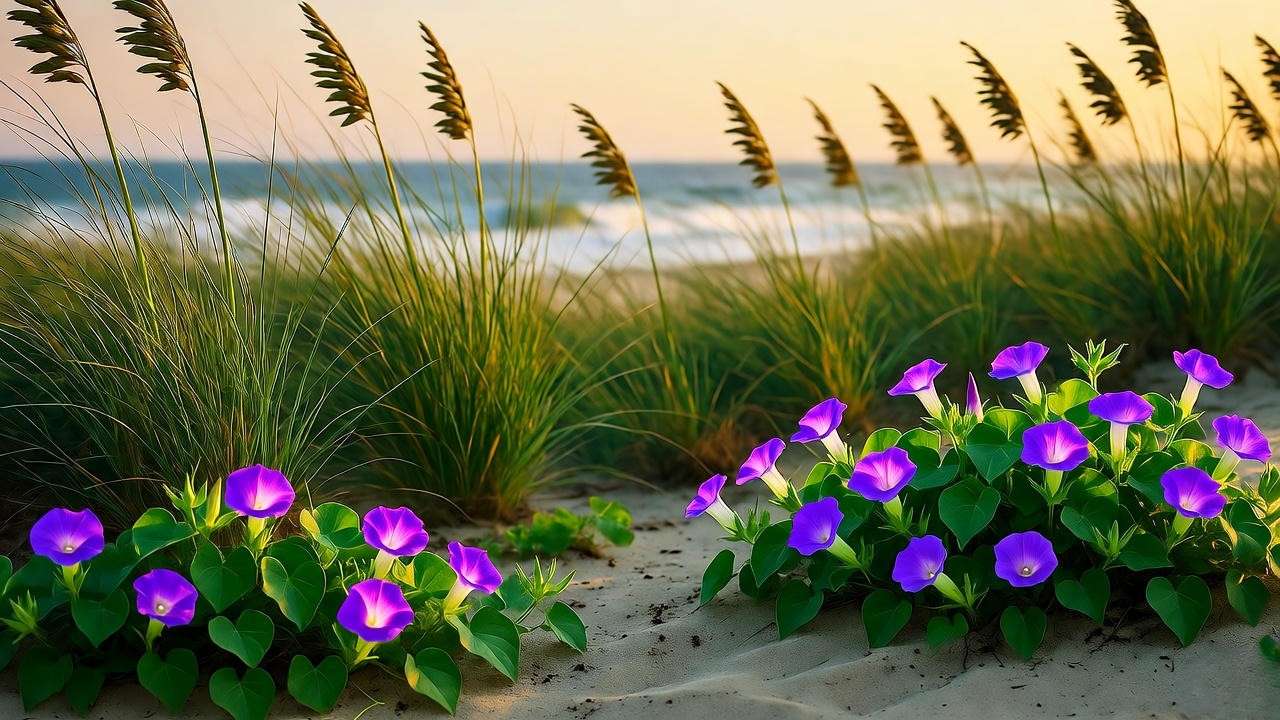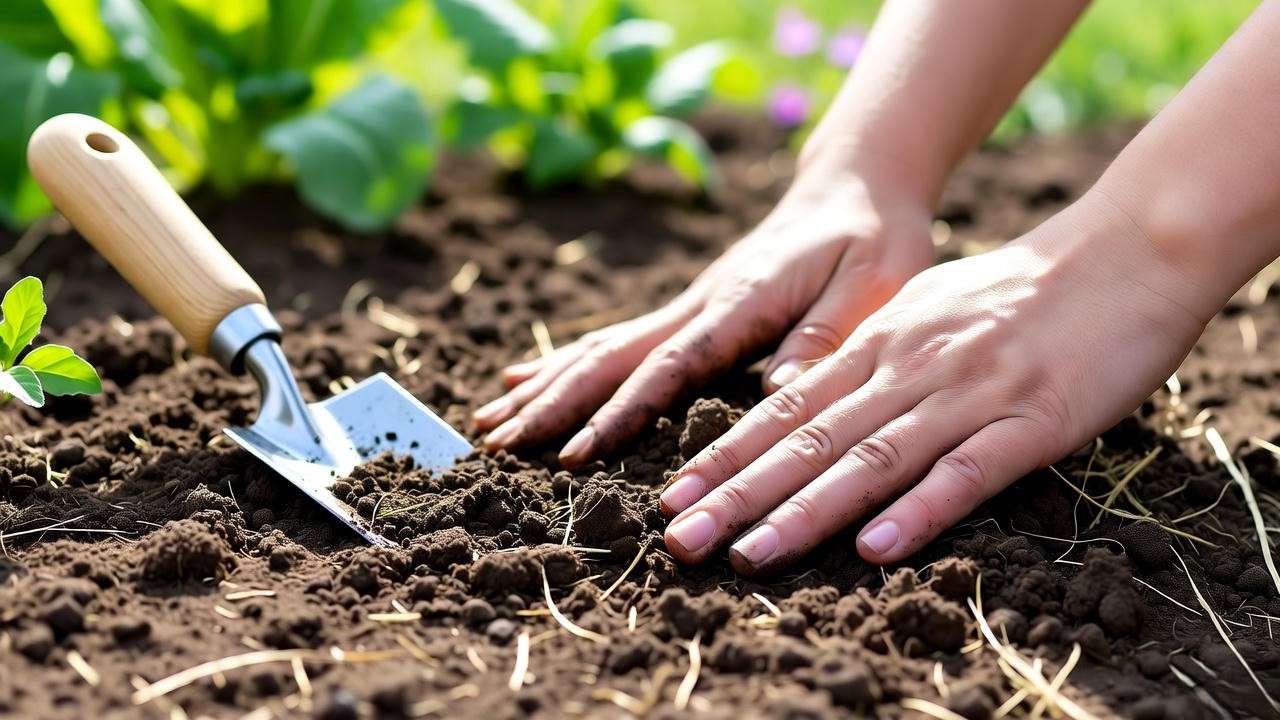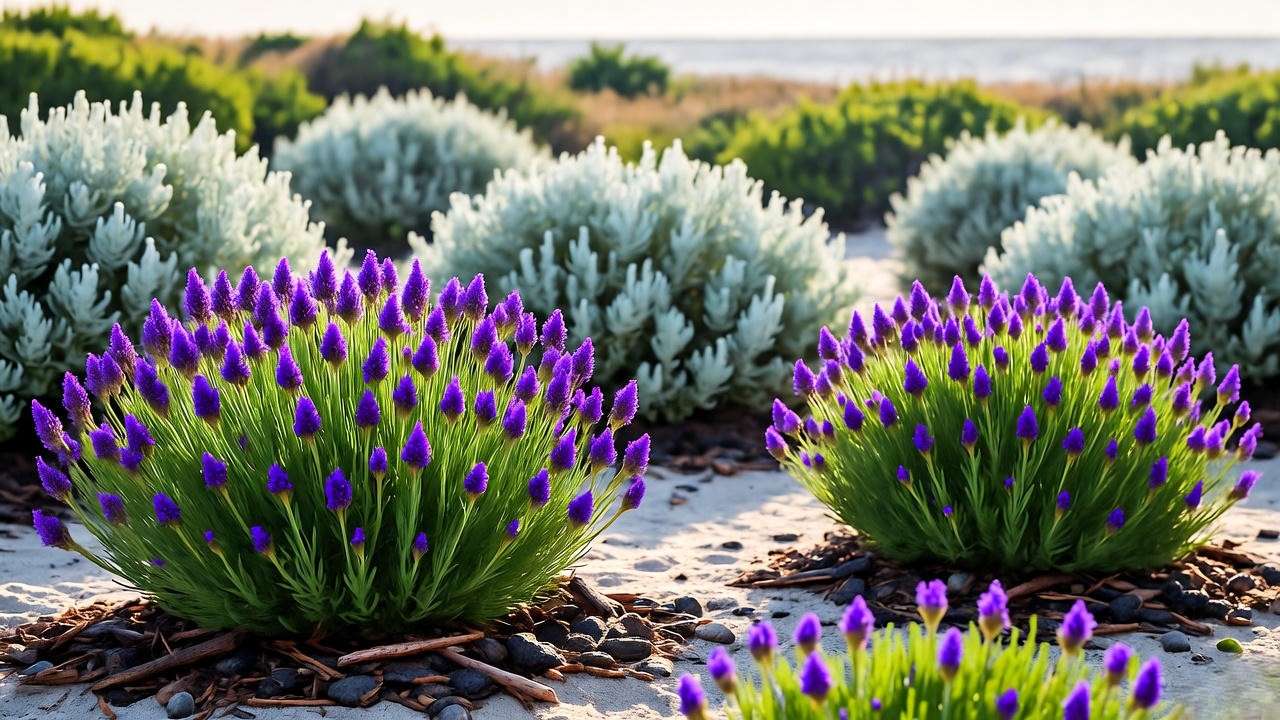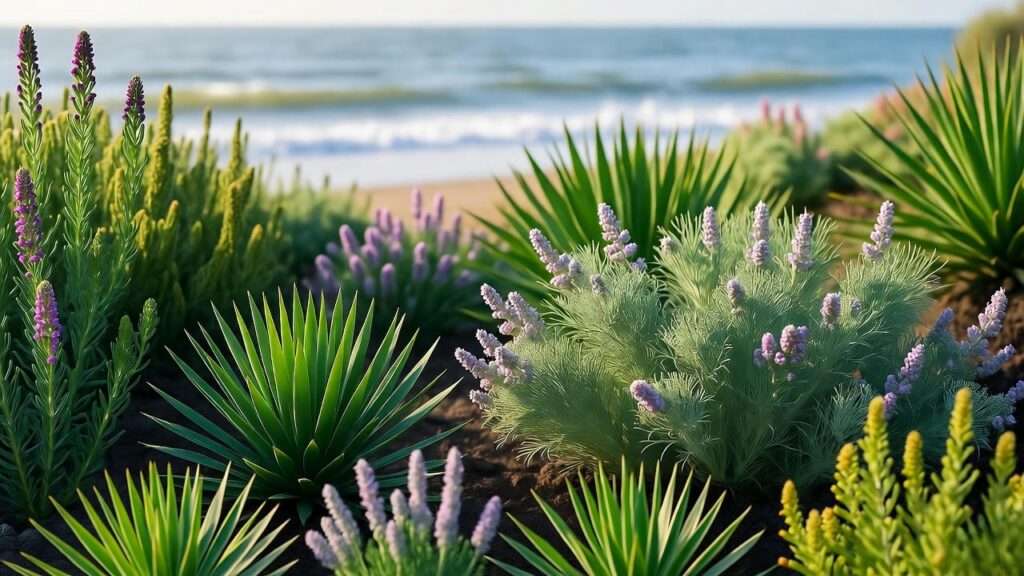Imagine a garden that thrives where others falter, kissed by salty breezes and glowing under the coastal sun. 🌞 Salt water plants, also known as halophytes, are nature’s resilient wonders, perfectly adapted to flourish in high-salinity environments like coastal regions or saline soils. If you’ve ever struggled to grow plants in salty, windy, or drought-prone conditions—or simply want to bring a seaside vibe to your backyard—this guide is for you. As a plant care specialist with over a decade of experience in coastal horticulture, I’ve cultivated thriving gardens in some of the toughest environments. In this comprehensive article, I’ll share expert techniques to help you select, grow, and care for salt water plants, transforming challenging landscapes into vibrant, low-maintenance oases. 🌴
Whether you’re a coastal gardener battling salty soil or an inland enthusiast craving a beachy aesthetic, this guide solves the problem of creating a thriving garden in harsh conditions. Let’s dive into the world of salt water plants and unlock their secrets! 🧂
What Are Salt Water Plants? Understanding Their Unique Nature 🧂
Defining Salt Water Plants
Salt water plants are a unique group of species that thrive in environments with high salt concentrations, such as coastal dunes, salt marshes, or saline inland soils. Known as halophytes, these plants have evolved remarkable adaptations to survive where most plants would perish. Some, like sea lavender (Limonium perezii), excrete salt through specialized glands, while others, like cordgrass (Spartina alterniflora), develop deep root systems to access fresher water underground. Glasswort (Salicornia), with its succulent, salt-storing stems, is another prime example of these resilient beauties.
These adaptations make salt water plants ideal for gardeners facing salty soils or coastal exposure. Their ability to handle salinity, drought, and poor soil conditions sets them apart from traditional garden plants.
Why Choose Salt Water Plants for Your Garden?
Salt water plants offer a host of benefits that make them a top choice for coastal and xeriscape gardens. 🌿 First, they’re incredibly low-maintenance, requiring minimal water and fertilization once established. Their resilience to harsh conditions like salt spray, strong winds, and sandy soils makes them perfect for challenging environments. Aesthetically, they bring a wild, coastal charm to any landscape, with their silvery foliage, grassy textures, or vibrant blooms.
Practically, salt water plants are excellent for erosion control along shorelines or slopes. For example, sea oats (Uniola paniculata) have deep roots that stabilize dunes, while mangroves protect coastlines from storm surges. Whether you’re in a coastal region or creating a seaside-inspired garden inland, these plants deliver beauty and functionality.
Top Salt Water Plants for Your Garden 🌿
Best Species for Coastal Gardens
To help you get started, here are seven popular salt water plants that thrive in salty conditions and add stunning variety to your garden:
- Sea Oats (Uniola paniculata) 🌾
- Appearance: Tall, graceful grasses with feathery seed heads.
- Growth Habits: Grows 3–6 feet tall, prefers full sun, and tolerates sandy soils.
- Ideal Conditions: Coastal dunes or sunny borders.
- Cordgrass (Spartina alterniflora) 🌱
- Appearance: Lush, green grass with a dense, clumping habit.
- Growth Habits: Reaches 2–7 feet, thrives in wet, saline soils.
- Ideal Conditions: Marshes or low-lying coastal areas.
- Beach Morning Glory (Ipomoea pes-caprae) 🌸
- Appearance: Low-growing with vibrant purple flowers and glossy leaves.
- Growth Habits: Spreads as a groundcover, perfect for stabilizing sandy soils.
- Ideal Conditions: Sunny, coastal areas with poor soil.
- Sea Lavender (Limonium perezii) 💜
- Appearance: Clusters of tiny, lavender-like flowers on wiry stems.
- Growth Habits: Grows 1–2 feet tall, drought- and salt-tolerant.
- Ideal Conditions: Rock gardens or mixed borders.
- *Saltbush (Atriplex spp.) 🌿
- Appearance: Silvery-gray foliage with a shrubby form.
- Growth Habits: Grows 1–6 feet, depending on species, and thrives in arid, salty soils.
- Ideal Conditions: Dry coastal regions or xeriscapes.
- Mangrove (Rhizophora mangle) 🌴
- Appearance: Iconic trees with arching roots and glossy leaves.
- Growth Habits: Grows 10–50 feet, thrives in brackish water.
- Ideal Conditions: Tropical or subtropical coastlines.
- *Glasswort (Salicornia spp.) 🥗
- Appearance: Succulent, green stems that turn red in fall.
- Growth Habits: Grows 6–18 inches, loves wet, saline soils.
- Ideal Conditions: Salt marshes or edible gardens (yes, it’s edible!).

Expert Tip: Mix grasses like sea oats with groundcovers like beach morning glory and shrubs like saltbush for a diverse, visually appealing coastal garden.
Native vs. Non-Native Salt Water Plants
Choosing native salt water plants supports local ecosystems and ensures better adaptation to your region’s climate. For example, in North America, sea oats and cordgrass are native to Atlantic and Gulf coasts, while in Australia, pigface (Carpobrotus glaucescens) thrives in sandy soils. Non-native plants, like certain ornamental sea lavenders, can work well but may require more care to establish.
Insight: Check with your local extension service or botanical garden for a list of native salt water plants suited to your area. Native species attract pollinators and wildlife, boosting biodiversity.
How to Grow Salt Water Plants: A Step-by-Step Guide 🌱
Preparing the Soil for Salt Water Plants
Salt water plants thrive in well-draining soils, such as sandy or loamy mixes, which mimic their natural coastal habitats. Test your soil’s salinity and drainage before planting. If your soil retains too much water, amend it with sand or gravel to improve drainage. Adding organic matter like compost can balance nutrients without overwhelming these low-maintenance plants.
Example: For sea oats, mix one part compost with two parts sand to create a loose, nutrient-poor soil that mimics dune conditions.

Planting Techniques for Success
Timing is key when planting salt water plants. Spring or early fall provides mild temperatures for root establishment. Follow these steps:
- Choose the Right Spot: Most salt water plants need full sun (6+ hours daily).
- Dig Properly: Make holes twice as wide as the root ball but no deeper.
- Space Appropriately: For example, space sea oats 2–3 feet apart to allow for spreading.
- Water Initially: Water thoroughly after planting to settle the soil.
Expert Insight: Apply a thin layer of organic mulch, like bark or seaweed, to retain moisture and reduce salt buildup around roots.
Watering and Irrigation Tips
Salt water plants are naturally drought-tolerant, requiring minimal watering once established. During the first 4–6 weeks, water lightly every 2–3 days to help roots settle. Afterward, water only during prolonged dry spells. Drip irrigation or soaker hoses are ideal, as they deliver water directly to the roots without wetting foliage, which can accumulate salt.
Warning: Overwatering can harm salt-adapted roots, leading to rot. Always check soil moisture before watering.
Caring for Salt Water Plants: Maintenance Made Easy 🛠️
Pruning and Grooming
Most salt water plants require minimal pruning, but light grooming keeps them tidy. For grasses like sea oats, cut back dead foliage in late winter to encourage new growth. For shrubs like saltbush, trim lightly in spring to maintain shape. Always use clean, sharp tools to avoid spreading disease.
Example: Trim sea lavender’s spent flower stalks after blooming to promote a second flush of flowers.

Managing Pests and Diseases
Salt water plants are naturally resistant to many pests and diseases due to their tough constitutions. However, aphids or scale insects may occasionally appear. Use natural solutions like neem oil or insecticidal soap to manage infestations. Regular inspections catch issues early, preventing spread.
Tip: Rinse foliage with fresh water during dry spells to remove salt buildup, which can deter pests.
Fertilizing Salt Water Plants
These plants thrive in nutrient-poor soils, so fertilization should be minimal. Use a low-nitrogen, slow-release fertilizer once a year in spring. Over-fertilizing can lead to lush, weak growth that’s prone to damage.
Expert Advice: A balanced 10-10-10 fertilizer diluted to half strength works well for most salt water plants.
Designing a Coastal Garden with Salt Water Plants 🏖️
Creating a Seaside Aesthetic
Crafting a coastal garden with salt water plants is like painting a living masterpiece that evokes the wild beauty of the shore. 🌊 Combine plants with varied textures and heights for a dynamic look. For instance, tall sea oats swaying in the breeze create a dramatic backdrop, while low-growing beach morning glory adds vibrant color at ground level. Incorporate hardscaping elements like driftwood, weathered rocks, or seashells to enhance the seaside vibe.
Design Tip: Arrange plants in natural, flowing patterns to mimic coastal dunes or marshes. For example, cluster sea lavender with saltbush for a silvery, textured border that catches the eye.
Companion Plants for Salt Water Gardens
To diversify your coastal garden, pair salt water plants with salt-tolerant companions like yucca (Yucca filamentosa) or agave (Agave americana), which add bold shapes and textures. Pollinator-friendly plants like sea lavender attract bees and butterflies, supporting local ecosystems. For a pop of color, consider salt-tolerant perennials like red valerian (Centranthus ruber).
Insight: Biodiversity is key to a resilient garden. Mixing salt water plants with other drought-tolerant species creates a balanced, low-maintenance ecosystem that thrives in tough conditions.
Challenges of Growing Salt Water Plants and How to Overcome Them ⚠️
Dealing with High Salinity
High soil salinity can challenge even salt water plants if not managed properly. Test your soil’s salinity using a conductivity meter (available at garden centers or through extension services). If salinity is too high, use leaching techniques—watering deeply with fresh water to flush excess salts below the root zone. For small gardens, raised beds or containers filled with a sandy soil mix offer better control over salinity.
Solution: In coastal areas, install a rain barrel to collect fresh water for leaching or rinsing salt from plant leaves.
Coping with Harsh Coastal Conditions
Coastal gardens face relentless wind, salt spray, and erosion. Protect your salt water plants by creating natural windbreaks, such as planting hardy shrubs like saltbush or installing permeable fences. For erosion control, choose deep-rooted species like sea oats or mangroves, which stabilize soil and prevent runoff.
Example: In Florida, red mangroves (Rhizophora mangle) are planted along shorelines to protect against storm surges and erosion, creating a natural barrier.

Common Mistakes to Avoid
Beginners often make avoidable errors when growing salt water plants. Overwatering is a top mistake, as these plants are adapted to dry, salty conditions. Another pitfall is choosing non-native species that struggle to adapt or become invasive. Always research your region’s climate and native plants before selecting.
Tip for Beginners: Start with hardy, low-maintenance species like saltbush or glasswort to build confidence before experimenting with more demanding plants like mangroves.
Environmental Benefits of Salt Water Plants 🌍
Salt water plants are more than just garden showstoppers—they’re environmental heroes. 🌱 Their deep roots stabilize coastal soils, preventing erosion and protecting shorelines from storms. They also provide critical habitats for wildlife, from nesting birds to pollinators. For example, cordgrass marshes are nurseries for fish and crustaceans, supporting coastal biodiversity.
From a sustainability perspective, salt water plants require minimal water and chemical inputs, making them eco-friendly choices for modern gardeners. Their ability to thrive in saline soils also makes them allies in combating climate change, as they help maintain coastal ecosystems under rising sea levels.
Expert Insight: By planting native salt water plants, you contribute to local conservation efforts and reduce your garden’s carbon footprint.

FAQs About Salt Water Plants ❓
What are the easiest salt water plants to grow? Sea oats, saltbush, and beach morning glory are beginner-friendly due to their hardiness and low maintenance needs. They adapt well to sandy, salty soils and require minimal care once established.
Can salt water plants grow inland? Yes! With proper soil preparation—such as adding sand for drainage and mimicking coastal conditions—salt water plants can thrive inland. Containers are a great option for controlling soil conditions.
How do I know if my soil is too salty? Use a soil test kit to measure electrical conductivity. High readings indicate excessive salinity. Leaching with fresh water or using raised beds can help manage this issue.
Are salt water plants invasive? Some non-native species can become invasive, outcompeting local flora. Stick to native plants like sea oats or cordgrass to avoid ecological harm. Check with local authorities for invasive species lists.
Expert Tips for a Thriving Salt Water Garden 🌟
- Start Small: Begin with one or two hardy species, like saltbush or sea oats, to master their care before expanding your garden.
- Use Rainwater: Collect rainwater in barrels to rinse salt from foliage or leach excess salts from soil, especially in dry climates.
- Join Local Gardening Groups: Connect with coastal gardening communities for region-specific advice and plant swaps.
- Test Soil Regularly: Annual soil tests ensure optimal conditions for your salt water plants, preventing nutrient or salinity imbalances.
Insight: Experimenting with edible salt water plants, like glasswort, can add a fun, culinary twist to your garden. Try pickling its succulent stems for a salty treat!
Conclusion: Transform Your Garden with Salt Water Plants 🌊🌴
Salt water plants are the unsung heroes of coastal and xeriscape gardening, offering beauty, resilience, and environmental benefits in one low-maintenance package. 🌿 Whether you’re battling salty soils, stabilizing a shoreline, or creating a seaside-inspired retreat, these plants deliver stunning results with minimal effort. From the swaying grace of sea oats to the vibrant blooms of beach morning glory, your garden can become a thriving coastal oasis.
Ready to get started? Choose one or two salt water plants from this guide, follow our expert tips, and watch your garden flourish. Share your coastal garden photos on social media with #SaltWaterGarden to inspire others! With the right care, these resilient beauties will transform your landscape into a vibrant, sustainable masterpiece. 🌞













